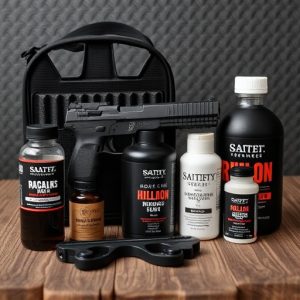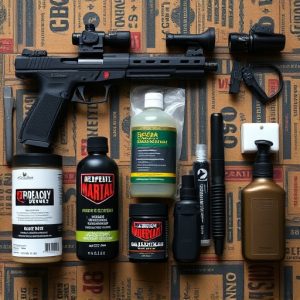Mastering Personal Safety: A Guide to Self-Defense Training and Product Selection
Self-defense training is a comprehensive approach to personal safety that goes beyond physical comb…….
Self-defense training is a comprehensive approach to personal safety that goes beyond physical combat skills, emphasizing situational awareness, assertiveness, and conflict avoidance. It empowers individuals with the knowledge and skills necessary to respond effectively to potential dangers, integrating personal defense products like pepper spray and stun guns as deterrents and escape aids. The training is inclusive, suitable for all ages and fitness levels, and focuses on respecting personal boundaries, staying vigilant in one's environment, and fostering confidence and decisiveness. These psychological aspects are as crucial as the physical techniques taught. Self-defense products are selected based on ease of use, portability, legal compliance, and specific contexts. A well-rounded self-defense program includes awareness, evasion tactics, and practical defense techniques, with regular practice ensuring proficiency in using personal defense products responsibly. The training also covers de-escalation tactics and the legal implications of self-defense, ensuring that individuals are equipped to handle threatening situations confidently and within the law. Regular training is key to maintaining readiness and effectively utilizing personal defense products for personal safety.
Self-defense training emerges as a critical skill in today’s dynamic and sometimes unpredictable environment. It empowers individuals with the tools and knowledge necessary to navigate potential threats safely. This article delves into the significance of self-defense, highlighting how personal defense products complement effective strategies. We explore the core elements of an inclusive self-defense program and offer guidance on selecting the most suitable personal defense products to bolster your self-defense capabilities. Through expert insights and practical advice, this piece aims to equip readers with a comprehensive understanding of self-defense training, ensuring they are well-prepared should they ever need to defend themselves.
Understanding the Importance of Self-Defense Training for Personal Safety
In an era where personal safety concerns are on the rise, self-defense training has become a crucial component in one’s arsenal to safeguard themselves against potential threats. It is not merely about learning to fight but understanding how to avoid dangerous situations through awareness and assertiveness. Self-defense empowers individuals by providing them with the knowledge and skills necessary to protect themselves effectively, should the need arise. This form of training often includes instruction on the use of personal defense products, such as pepper spray or stun guns, which can be critical in deterring attackers or escaping harm. By integrating these products into training sessions, individuals gain hands-on experience with effective tools that complement their physical responses and enhance their overall protective strategies.
Moreover, self-defense training is adaptable to all fitness levels and ages, making it accessible for a wide range of people. It emphasizes personal boundaries and the importance of being aware of one’s surroundings, which can significantly reduce the likelihood of becoming a victim. The training also reinforces the psychological aspects of defense, such as confidence and decisiveness, which are just as vital as the physical techniques. By investing time in self-defense training, individuals not only equip themselves with practical skills but also foster a mindset geared towards proactive personal safety, ensuring they are better prepared to handle threatening situations effectively.
The Role of Personal Defense Products in Effective Self-Defense Strategies
Personal defense products play a pivotal role in enhancing one’s self-defense strategies, serving as a deterrent and a potential lifesaver in critical situations. These tools are designed to incapacitate an assailant or create enough distance between the attacker and the individual to escape or seek help. When selecting personal defense products, it’s crucial to consider factors such as ease of use, portability, legal implications, and the specific environment in which they will be utilized. Pepper spray, stun guns, and personal alarms are popular choices due to their effectiveness and legality in various regions. These devices should complement a comprehensive self-defense training program that includes awareness, avoidance, and physical techniques. Regular practice with chosen defense products ensures familiarity and proficiency, which can significantly increase the likelihood of effectively using them during an encounter. Additionally, understanding the limitations and proper handling of these items is essential for safety and efficacy. As part of a well-rounded self-defense approach, personal defense products can be a reliable component that enhances one’s ability to protect oneself in potentially threatening situations.
Key Components of a Comprehensive Self-Defense Training Program
A well-rounded self-defense training program is critical for effectively preparing individuals to protect themselves in potentially threatening situations. These programs typically include a variety of disciplines, each contributing uniquely to one’s personal safety toolkit. Fundamental to any self-defense curriculum is physical conditioning, which enhances strength, flexibility, and endurance, ensuring that participants can react swiftly and effectively when needed. Self-defense techniques themselves are a cornerstone of the training, focusing on strikes, kicks, and blocks that are practical and adaptable across various scenarios. Additionally, situational awareness training is instrumental in teaching individuals how to recognize and respond to potential dangers before they escalate. Personal defense products can complement these skills by providing non-lethal means to incapacitate an assailant or create a barrier between the individual and the threat. Instructors often introduce students to a range of personal defense products, such as pepper spray, stun guns, and personal alarms, demonstrating their proper use and storage. Strategies for de-escalation and legal considerations are also integrated into the training to ensure that participants understand the importance of using force only when necessary and within the confines of the law. By combining physical techniques with product usage and situational awareness, a comprehensive self-defense program empowers individuals with the skills and knowledge to navigate potentially dangerous situations with greater confidence and safety.
Choosing the Right Personal Defense Products to Enhance Your Self-Defense Skills
When considering self-defense training, selecting the appropriate personal defense products is crucial to complement your skills and enhance your safety. It’s important to assess your individual needs, as the most effective product for you will depend on various factors such as your environment, physical abilities, and the potential threats you may face. Personal defense sprays, for example, can provide a non-lethal means of deterring an attacker and offer valuable time to escape. These devices are easy to carry and come with clear instructions for use. Additionally, stun guns and pepper spray have become popular due to their effectiveness in incapacitating an aggressor without causing permanent harm. When choosing a stun gun, factors like voltage, amperage, and the availability of additional functions like a flashlight should be considered. It’s also vital to familiarize yourself with local laws regarding the use and carry of these devices, as regulations can vary by jurisdiction.
Investing in high-quality personal defense products is just one aspect; consistent training and practice are equally important. Self-defense classes that focus on situational awareness, de-escalation techniques, and physical combat skills will complement your product choices effectively. Understanding the mechanics of your chosen defense tools and integrating them into your training regimen can significantly improve your response time in a real-life scenario. For instance, practicing with personal defense products like keychain alarms or personal alarms can help you become more adept at deploying them swiftly and accurately when needed. Additionally, incorporating self-defense techniques that leverage natural body movements can enhance your ability to defend yourself without the need for additional tools. Regardless of the products you choose, always prioritize regular practice and staying informed about best practices in personal defense to ensure you are fully prepared should the need arise.


